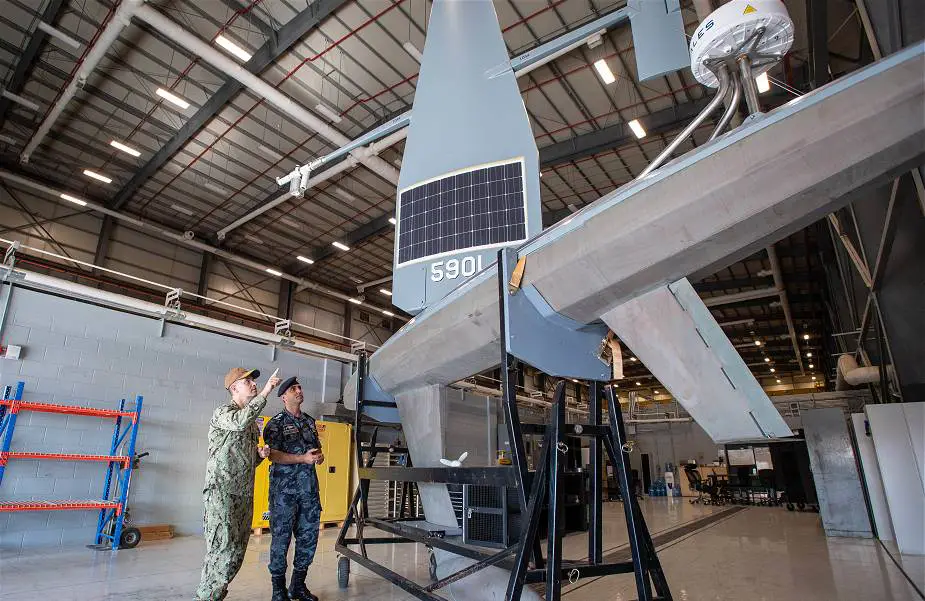According to information published by the United States Navy on November 19, 2021, Jordan and U.S. Navy have launched a partnership to create a joint hub for Saildrone USV (Unmanned Surface Vessel) operations in the Red Sea.
Follow Navy Recognition on Google News at this link
 Personnel from NAVCENT’s Task Force 59 briefed Col. Hisham Khaleel Aljarrah, commander of the Royal Jordanian Naval Force, alongside Vice Adm. Brad Cooper, commander of NAVCENT, U.S. 5th Fleet and Combined Maritime Forces on the task force’s new Saildrone Explorer unmanned surface vessel USV. (Picture source U.S. Navy)
Personnel from NAVCENT’s Task Force 59 briefed Col. Hisham Khaleel Aljarrah, commander of the Royal Jordanian Naval Force, alongside Vice Adm. Brad Cooper, commander of NAVCENT, U.S. 5th Fleet and Combined Maritime Forces on the task force’s new Saildrone Explorer unmanned surface vessel USV. (Picture source U.S. Navy)
During a visit by Col. Hisham Khaleel Aljarrah, commander of the Royal Jordanian Naval Force at the U.S. Naval Support Activity Bahrain, U.S. personnel from NAVCENT’s (Naval Forces Central Command) Task Force 59 have presented the new Saildrone Explorer unmanned surface vessel (USV).
The visit signaled U.S. 5th Fleet’s commitment to partnering with Jordan after establishing the new unmanned task force in September to focus U.S. 5th Fleet efforts on unmanned systems and artificial intelligence integration.
The Royal Jordanian naval base in Aqaba, Jordan will become a joint hub for Saildrone USV operations in the Red Sea next month. The United States and Jordan share a strong bilateral partnership in maintaining regional maritime security and stability.
The Middle East region's unique geography, climate, and strategic importance offer an ideal environment for unmanned innovation through multilateral collaboration. The area includes the world's largest standing maritime partnership, Arabian Gulf, Red Sea, Gulf of Oman, and parts of the Indian Ocean.
The Saildrone Explorer is a 23-foot-long (7m), 16-foot-tall (5m) USV (Unmanned Surface Vessel) reliant on wind power for propulsion. The vessel houses a package of sensors powered through solar energy for monitoring the maritime environment.
The Saildrone is powered by a 5 m (15 ft) wing, which is effectively a sail like on a sailboat, but of a design more similar to the wing on an airplane. Wind passing over the wing produces thrust, and a small tab on the end of the tail attached to the wing controls the angle of attack. The rudder controls the direction of the hull, and the keel keeps the Saildrone upright. They are equipped with GPS and an onboard computer, enabling the vehicles to navigate following prescribed waypoints, while staying in a safety corridor, taking winds and currents into consideration autonomously.



